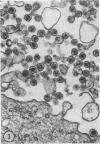Abstract
Bromodeoxyuridine (BrdU), whether administered in a 30-hr pulse of 30 μg/ml or continuously in low concentrations (1-3 μg/ml), significantly increased production of particles with the morphology of murine leukemia virus in a mouse melanoma (B16) cell line. Particles were very rare in control cells, detectable only by electron microscopy. By contrast, in many experiments with BrdU-treated cells the numbers of virus particles counted by electron microscopy increased over 100-fold, and other tests for murine leukemia virus (plaque assay and tests for group-specific antigens 1 and 3 and for Gross cell-surface antigens) became positive. All BrdU-treated cells, regardless of drug concentration or length of treatment, in addition to showing loss of both pigment and of piled-up morphology, were suppressed in tumorigenicity compared with the control cells. These effects were all reversible. A significant percentage of mice injected with BrdU-treated cells were protected against subsequent tumor formation when challenged with malignant control cells. The degree of protection conferred on the mice correlated well with the number of virus particles counted in the injected cells. There was also good correlation between the amount of cell-associated virus and the degree of suppression of malignancy for cells treated continuously with 1 μg of BrdU per ml, but not as good for cells treated for short periods with higher concentrations of BrdU.
Keywords: murine leukemia virus, helper virus, tumor suppression, antigens, electron microscopy
Full text
PDF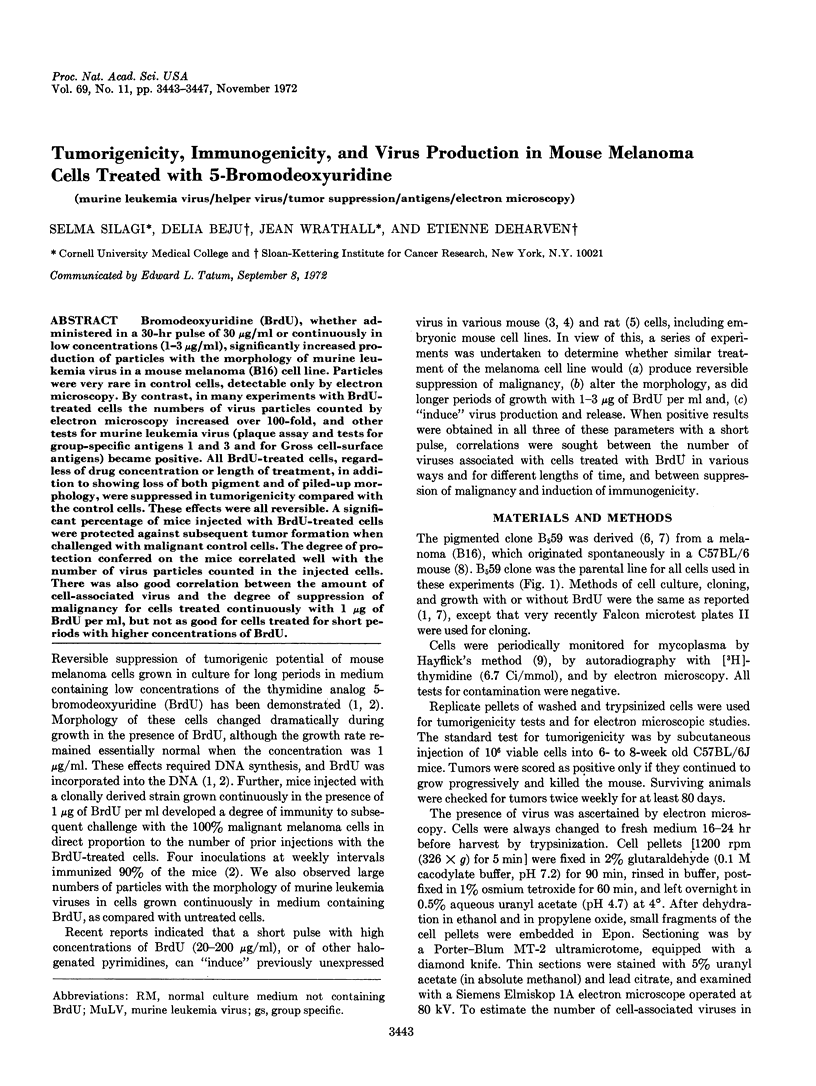
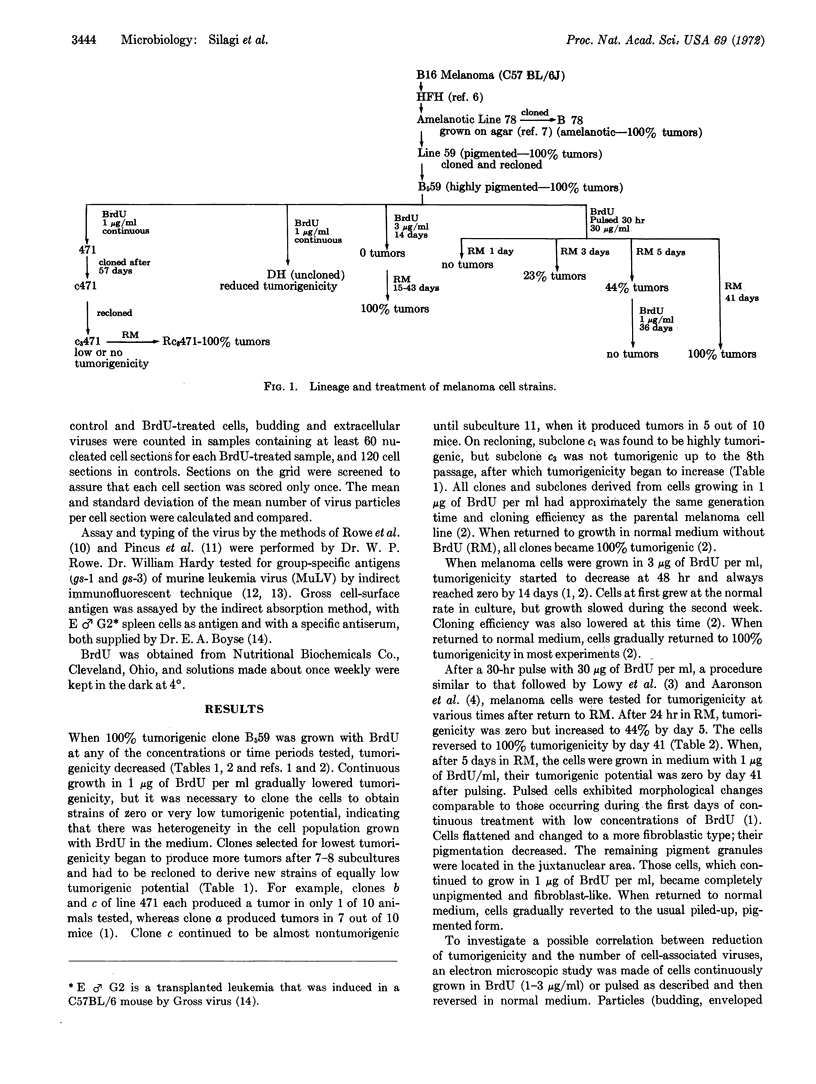
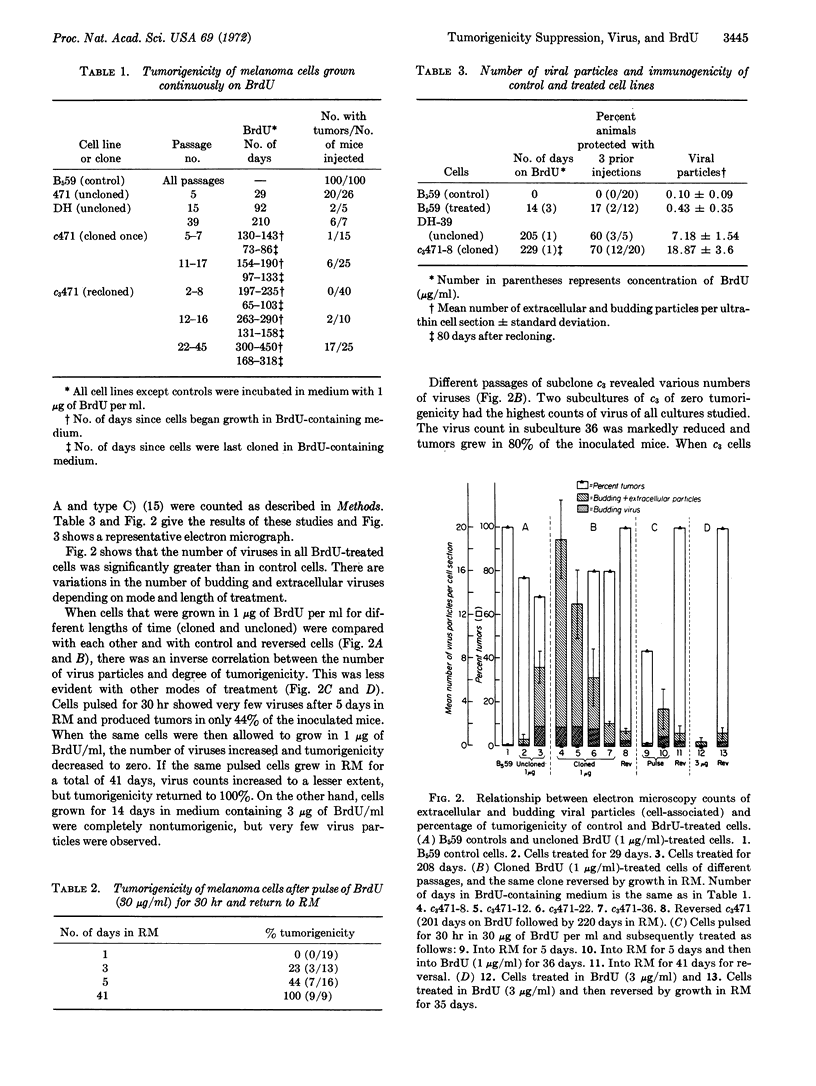
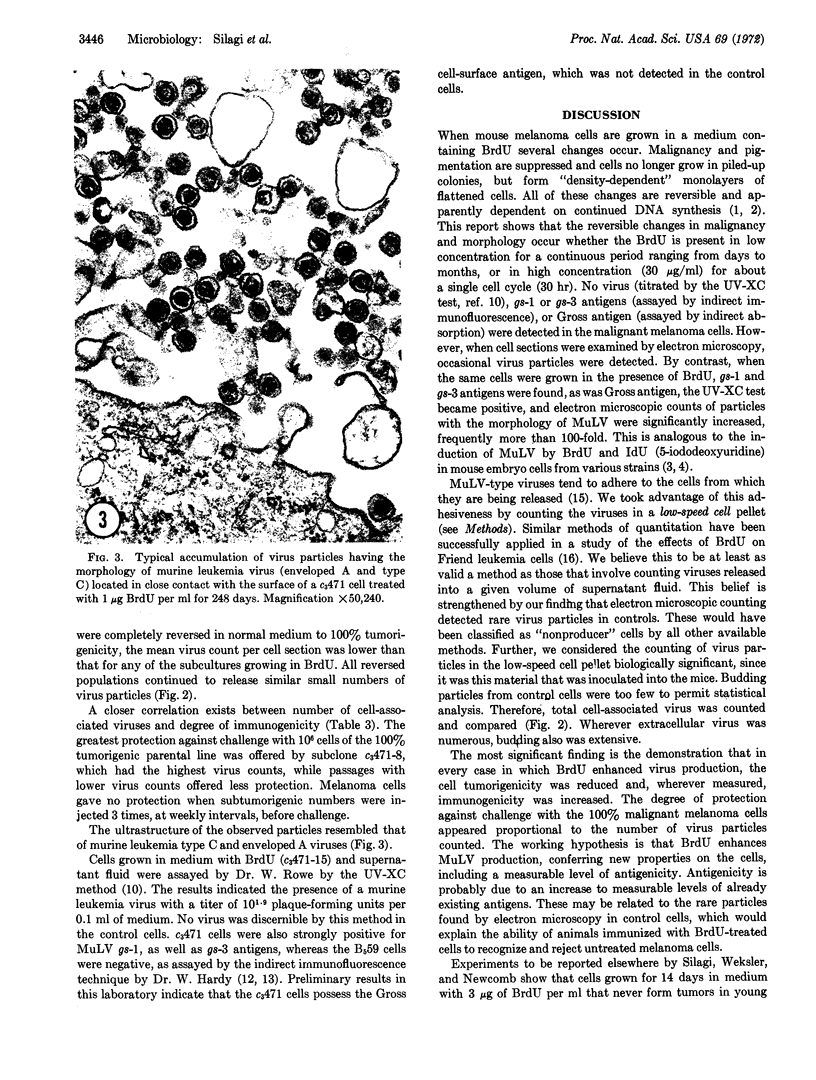
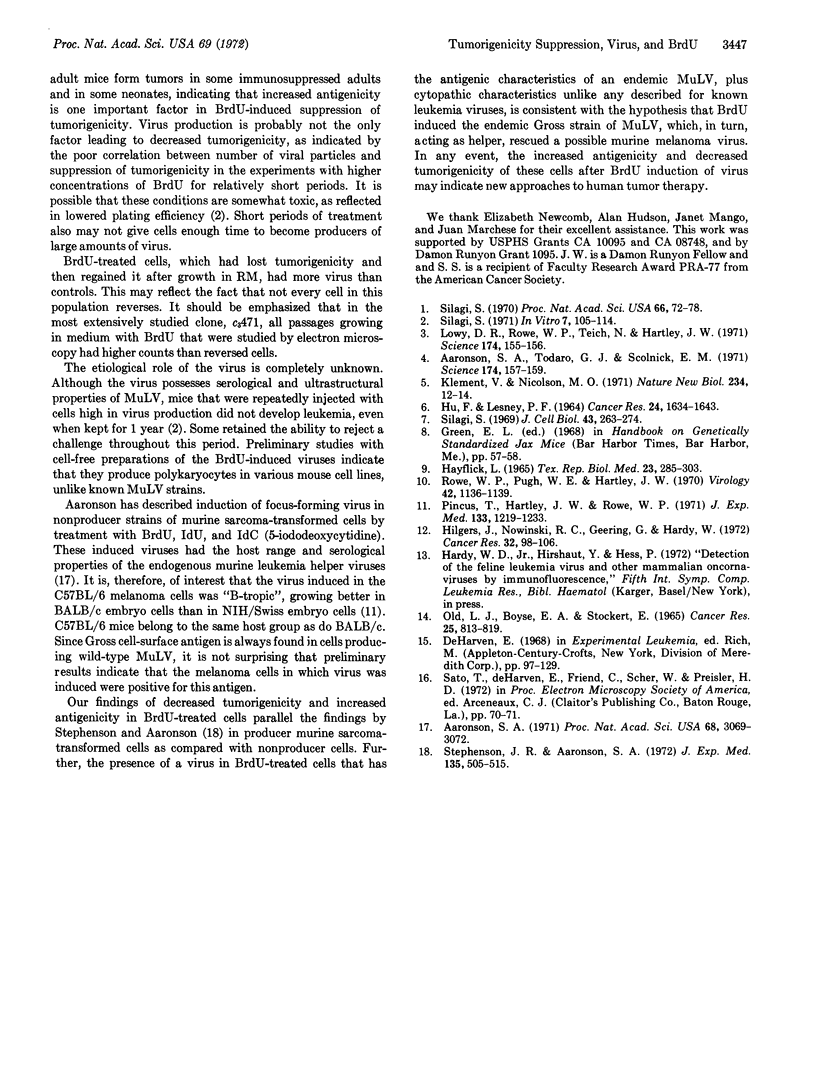
Images in this article
Selected References
These references are in PubMed. This may not be the complete list of references from this article.
- Aaronson S. A. Chemical induction of focus-forming virus from nonproducer cells transformed by murine sarcoma virus. Proc Natl Acad Sci U S A. 1971 Dec;68(12):3069–3072. doi: 10.1073/pnas.68.12.3069. [DOI] [PMC free article] [PubMed] [Google Scholar]
- Aaronson S. A., Todaro G. J., Scolnick E. M. Induction of murine C-type viruses from clonal lines of virus-free BALB-3T3 cells. Science. 1971 Oct 8;174(4005):157–159. doi: 10.1126/science.174.4005.157. [DOI] [PubMed] [Google Scholar]
- HU F., LESNEY P. F. THE ISOLATION AND CYTOLOGY OF TWO PIGMENT CELL STRAINS FROM B-16 MOUSE MELANOMAS. Cancer Res. 1964 Oct;24:1634–1643. [PubMed] [Google Scholar]
- Hayflick L. Tissue cultures and mycoplasmas. Tex Rep Biol Med. 1965 Jun;23(Suppl):285+–285+. [PubMed] [Google Scholar]
- Hilgers J., Nowinski R. C., Geering G., Hardy W. Detection of avian and mammalian oncogenic RNA viruses (oncornaviruses) by immunofluorescence. Cancer Res. 1972 Jan;32(1):98–106. [PubMed] [Google Scholar]
- Klement V., Nicolson M. O., Huebner R. J. Rescue of the genome of focus forming virus from rat non-productive lines by 5'-bromodeoxyruidine. Nat New Biol. 1971 Nov 3;234(44):12–14. doi: 10.1038/newbio234012a0. [DOI] [PubMed] [Google Scholar]
- Lowy D. R., Rowe W. P., Teich N., Hartley J. W. Murine leukemia virus: high-frequency activation in vitro by 5-iododeoxyuridine and 5-bromodeoxyuridine. Science. 1971 Oct 8;174(4005):155–156. doi: 10.1126/science.174.4005.155. [DOI] [PubMed] [Google Scholar]
- Old L. J., Boyse E. A., Stockert E. The G (Gross) leukemia antigen. Cancer Res. 1965 Jul;25(6):813–819. [PubMed] [Google Scholar]
- Pincus T., Hartley J. W., Rowe W. P. A major genetic locus affecting resistance to infection with murine leukemia viruses. I. Tissue culture studies of naturally occurring viruses. J Exp Med. 1971 Jun 1;133(6):1219–1233. doi: 10.1084/jem.133.6.1219. [DOI] [PMC free article] [PubMed] [Google Scholar]
- Rowe W. P., Pugh W. E., Hartley J. W. Plaque assay techniques for murine leukemia viruses. Virology. 1970 Dec;42(4):1136–1139. doi: 10.1016/0042-6822(70)90362-4. [DOI] [PubMed] [Google Scholar]
- Silagi S., Bruce S. A. Suppression of malignancy and differentiation in melanotic melanoma cells. Proc Natl Acad Sci U S A. 1970 May;66(1):72–78. doi: 10.1073/pnas.66.1.72. [DOI] [PMC free article] [PubMed] [Google Scholar]
- Silagi S. Control of pigment production in mouse melanoma cells in vitro. Evocation and maintenance. J Cell Biol. 1969 Nov;43(2):263–274. doi: 10.1083/jcb.43.2.263. [DOI] [PMC free article] [PubMed] [Google Scholar]
- Silagi S. Modification of malignancy by 5-bromodeoxyuridine. Studies of reversibility and immunological effects. In Vitro. 1971 Sep-Oct;7(2):105–114. doi: 10.1007/BF02628269. [DOI] [PubMed] [Google Scholar]
- Stephenson J. R., Aaronson S. A. Antigenic properties of murine sarcoma virus-transformed BALB-3T3 nonproducer cells. J Exp Med. 1972 Mar 1;135(3):503–515. doi: 10.1084/jem.135.3.503. [DOI] [PMC free article] [PubMed] [Google Scholar]



